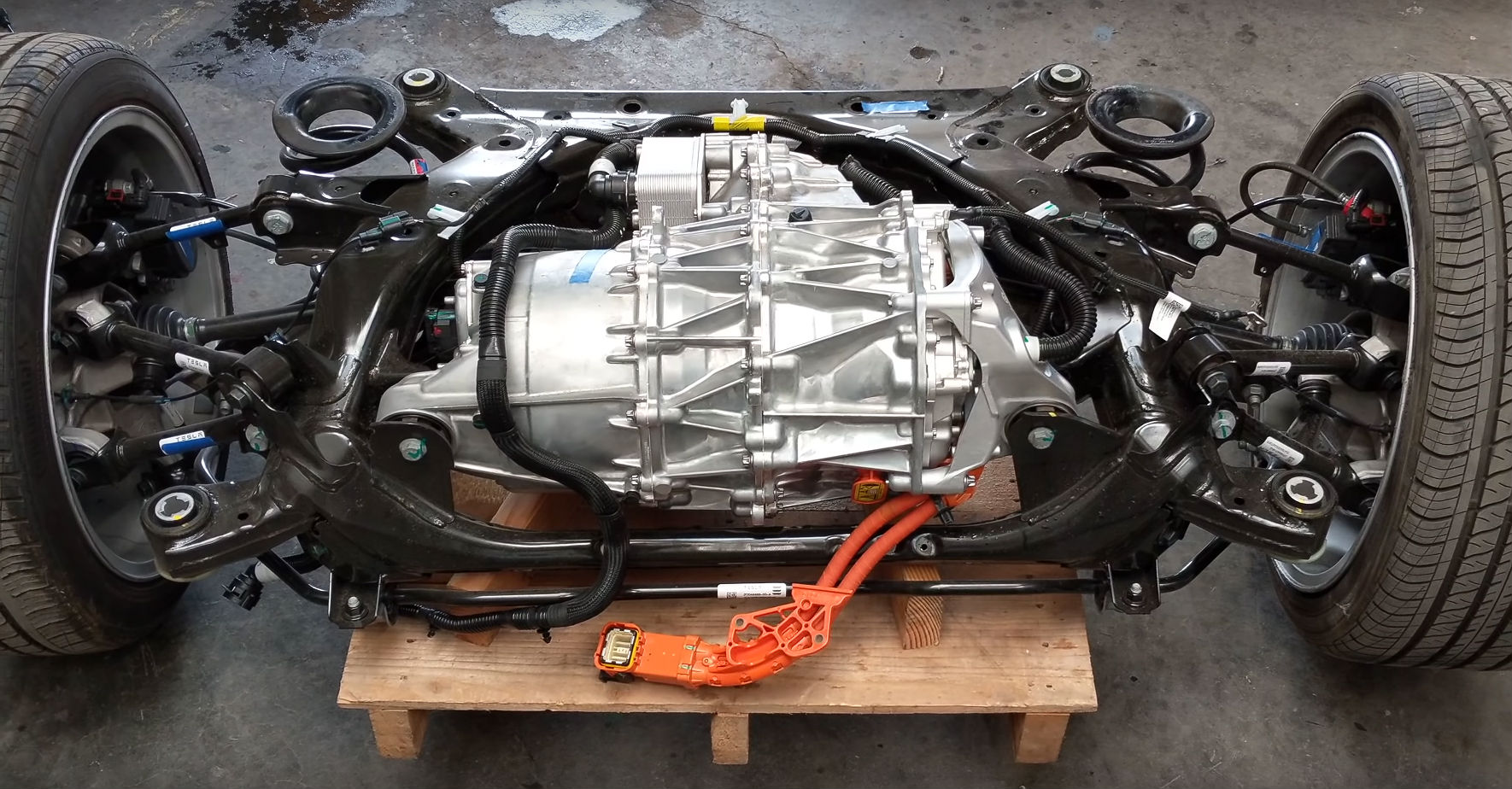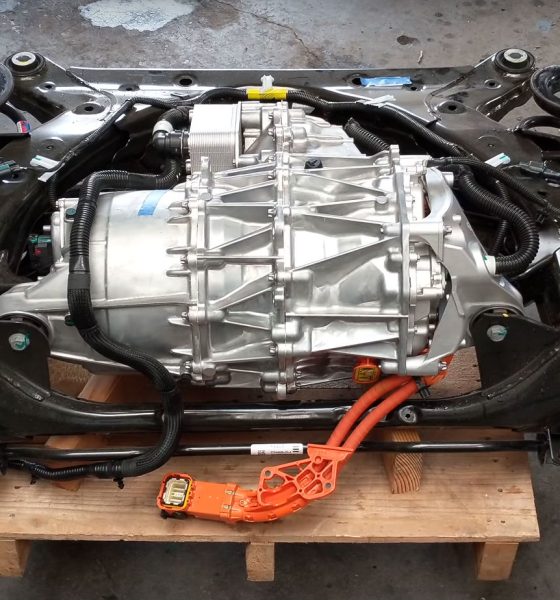Sandy Munro, a teardown specialist and auto industry veteran, is releasing the results of a study he conducted with battery expert Mark Ellis comparing the motors inside four electric vehicles, one of which was a Tesla Model 3. Despite analyzing the vehicle for a long time, the auto expert states that there are still mysteries that he is yet to uncover on the electric sedan.
“The Tesla has a lot of stuff hidden. The Tesla is a big mystery. It’s not obvious sometimes what clever things they’ve done, ” he commented about the California-based car maker’s motor in a recent interview summarized by Industry Week. “There’s mysteries every day. We thought we were clever, but we’re not that clever.”
One of the clever features Munro and Ellis discovered in their Model 3 teardown was the disconnect device for the high voltage. “It’s not really a fuse…It’s like a little explosion. If the car rolls over, they have a little disconnect that blows up, [cutting] all the power to everything and that way you don’t have an electric nightmare,” he revealed. Also, the inner magnets of the Model 3 motor were found to be under a lot of stress, which is not something other manufacturers have learned to do in high volume production. “We’ve talked to lots of magnet manufacturers, but this might be another one of these made-in-Tesla kind of deals. They make a lot of stuff in-house,” Munro guessed.

Another innovation that impressed the teardown team was how advanced the inverter/convertor device was that provides power to the motor, particularly in the use of silicon carbide on the devices’ integrated circuits. “It creates a lot less heat and is a lot faster than the Chevy and BMW,” Ellis added to the discussion. “Silicon carbide is the latest and greatest and Tesla so far is the only vehicle out there with it.” Munro and Ellis further noted the high level of tech Tesla’s motor contained, all while being considerably smaller than the competition.
The study will be released in a few weeks and also includes detailed information about the motors inside the Chevy Bolt, BMW i3, and Jaguar I-Pace. Munro had very positive things to say about Tesla’s technology, but the electric vehicles produced by industry giants did not receive quite the same accolades. “It looks like the other guys just went around and glued together whatever they could find off the shelf,” Munro jabbed at Tesla’s competition.
The BMW i3 was hit particularly hard and cited as the heaviest, most expensive, and very inefficient overall. “It’s not designed for… I don’t know what it’s designed for, really,” Munro swiped in the interview. “While everything on Tesla is…very, very efficient engineering.” Munro still isn’t sold on the Model 3 body, though, and takes issue with the complexity of the process it takes to manufacture it thanks to the number of parts, materials, and fastenings involved.
Munro has a history of strong opinions on Tesla’s car intended for the mass market. After completing an initial teardown of a 2017 version of the vehicle, he infamously commented that the car’s panel gaps could be seen “from Mars” among other very critical remarks about the way the car was manufactured. Tesla eventually issued a statement in response to the criticisms, indicating that significant improvements had been made to its Model 3 manufacturing process which would render moot many of the issues identified.
Once the Model 3 teardown was complete, Munro later admitted to eating “a lot of crow” in response to the technology installed and implemented throughout the car. He praised the Model 3 battery pack and the way it handles on the road, in particular, and also estimated Tesla was turning a 30% profit on the vehicle. Munro ultimately concluded that everything from the car’s suspension and down was perfect, but everything about its bodywork was questionable.
While the study Sandy Munro and Mark Ellis have conducted has not yet been released, from the sounds of it, crow seems to have still been on the menu for Tesla’s inner workings while old criticisms still stand about its outer packaging.

News
Tesla is not sparing any expense in ensuring the Cybercab is safe
Images shared by the longtime watcher showed 16 Cybercab prototypes parked near Giga Texas’ dedicated crash test facility.

The Tesla Cybercab could very well be the safest taxi on the road when it is released and deployed for public use. This was, at least, hinted at by the intensive safety tests that Tesla seems to be putting the autonomous two-seater through at its Giga Texas crash test facility.
Intensive crash tests
As per recent images from longtime Giga Texas watcher and drone operator Joe Tegtmeyer, Tesla seems to be very busy crash testing Cybercab units. Images shared by the longtime watcher showed 16 Cybercab prototypes parked near Giga Texas’ dedicated crash test facility just before the holidays.
Tegtmeyer’s aerial photos showed the prototypes clustered outside the factory’s testing building. Some uncovered Cybercabs showed notable damage and one even had its airbags engaged. With Cybercab production expected to start in about 130 days, it appears that Tesla is very busy ensuring that its autonomous two-seater ends up becoming the safest taxi on public roads.
Prioritizing safety
With no human driver controls, the Cybercab demands exceptional active and passive safety systems to protect occupants in any scenario. Considering Tesla’s reputation, it is then understandable that the company seems to be sparing no expense in ensuring that the Cybercab is as safe as possible.
Tesla’s focus on safety was recently highlighted when the Cybertruck achieved a Top Safety Pick+ rating from the Insurance Institute for Highway Safety (IIHS). This was a notable victory for the Cybertruck as critics have long claimed that the vehicle will be one of, if not the, most unsafe truck on the road due to its appearance. The vehicle’s Top Safety Pick+ rating, if any, simply proved that Tesla never neglects to make its cars as safe as possible, and that definitely includes the Cybercab.
Elon Musk
Tesla’s Elon Musk gives timeframe for FSD’s release in UAE
Provided that Musk’s timeframe proves accurate, FSD would be able to start saturating the Middle East, starting with the UAE, next year.

Tesla CEO Elon Musk stated on Monday that Full Self-Driving (Supervised) could launch in the United Arab Emirates (UAE) as soon as January 2026.
Provided that Musk’s timeframe proves accurate, FSD would be able to start saturating the Middle East, starting with the UAE, next year.
Musk’s estimate
In a post on X, UAE-based political analyst Ahmed Sharif Al Amiri asked Musk when FSD would arrive in the country, quoting an earlier post where the CEO encouraged users to try out FSD for themselves. Musk responded directly to the analyst’s inquiry.
“Hopefully, next month,” Musk wrote. The exchange attracted a lot of attention, with numerous X users sharing their excitement at the idea of FSD being brought to a new country. FSD (Supervised), after all, would likely allow hands-off highway driving, urban navigation, and parking under driver oversight in traffic-heavy cities such as Dubai and Abu Dhabi.
Musk’s comments about FSD’s arrival in the UAE were posted following his visit to the Middle Eastern country. Over the weekend, images were shared online of Musk meeting with UAE Defense Minister, Deputy Prime Minister, and Dubai Crown Prince HH Sheikh Hamdan bin Mohammed. Musk also posted a supportive message about the country, posting “UAE rocks!” on X.
FSD recognition
FSD has been getting quite a lot of support from foreign media outlets. FSD (Supervised) earned high marks from Germany’s largest car magazine, Auto Bild, during a test in Berlin’s challenging urban environment. The demonstration highlighted the system’s ability to handle dense traffic, construction sites, pedestrian crossings, and narrow streets with smooth, confident decision-making.
Journalist Robin Hornig was particularly struck by FSD’s superior perception and tireless attention, stating: “Tesla FSD Supervised sees more than I do. It doesn’t get distracted and never gets tired. I like to think I’m a good driver, but I can’t match this system’s all-around vision. It’s at its best when both work together: my experience and the Tesla’s constant attention.” Only one intervention was needed when the system misread a route, showcasing its maturity while relying on vision-only sensors and over-the-air learning.
News
Tesla quietly flexes FSD’s reliability amid Waymo blackout in San Francisco
“Tesla Robotaxis were unaffected by the SF power outage,” Musk wrote in his post.

Tesla highlighted its Full Self-Driving (Supervised) system’s robustness this week by sharing dashcam footage of a vehicle in FSD navigating pitch-black San Francisco streets during the city’s widespread power outage.
While Waymo’s robotaxis stalled and caused traffic jams, Tesla’s vision-only approach kept operating seamlessly without remote intervention. Elon Musk amplified the clip, highlighting the contrast between the two systems.
Tesla FSD handles total darkness
The @Tesla_AI account posted a video from a Model Y operating on FSD during San Francisco’s blackout. As could be seen in the video, streetlights, traffic signals, and surrounding illumination were completely out, but the vehicle drove confidently and cautiously, just like a proficient human driver.
Musk reposted the clip, adding context to reports of Waymo vehicles struggling in the same conditions. “Tesla Robotaxis were unaffected by the SF power outage,” Musk wrote in his post.
Musk and the Tesla AI team’s posts highlight the idea that FSD operates a lot like any experienced human driver. Since the system does not rely on a variety of sensors and a complicated symphony of factors, vehicles could technically navigate challenging circumstances as they emerge. This definitely seemed to be the case in San Francisco.
Waymo’s blackout struggles
Waymo faced scrutiny after multiple self-driving Jaguar I-PACE taxis stopped functioning during the blackout, blocking lanes, causing traffic jams, and requiring manual retrieval. Videos shared during the power outage showed fleets of Waymo vehicles just stopping in the middle of the road, seemingly confused about what to do when the lights go out.
In a comment, Waymo stated that its vehicles treat nonfunctional signals as four-way stops, but “the sheer scale of the outage led to instances where vehicles remained stationary longer than usual to confirm the state of the affected intersections. This contributed to traffic friction during the height of the congestion.”
A company spokesperson also shared some thoughts about the incidents. “Yesterday’s power outage was a widespread event that caused gridlock across San Francisco, with non-functioning traffic signals and transit disruptions. While the failure of the utility infrastructure was significant, we are committed to ensuring our technology adjusts to traffic flow during such events,” the Waymo spokesperson stated, adding that it is “focused on rapidly integrating the lessons learned from this event, and are committed to earning and maintaining the trust of the communities we serve every day.”










